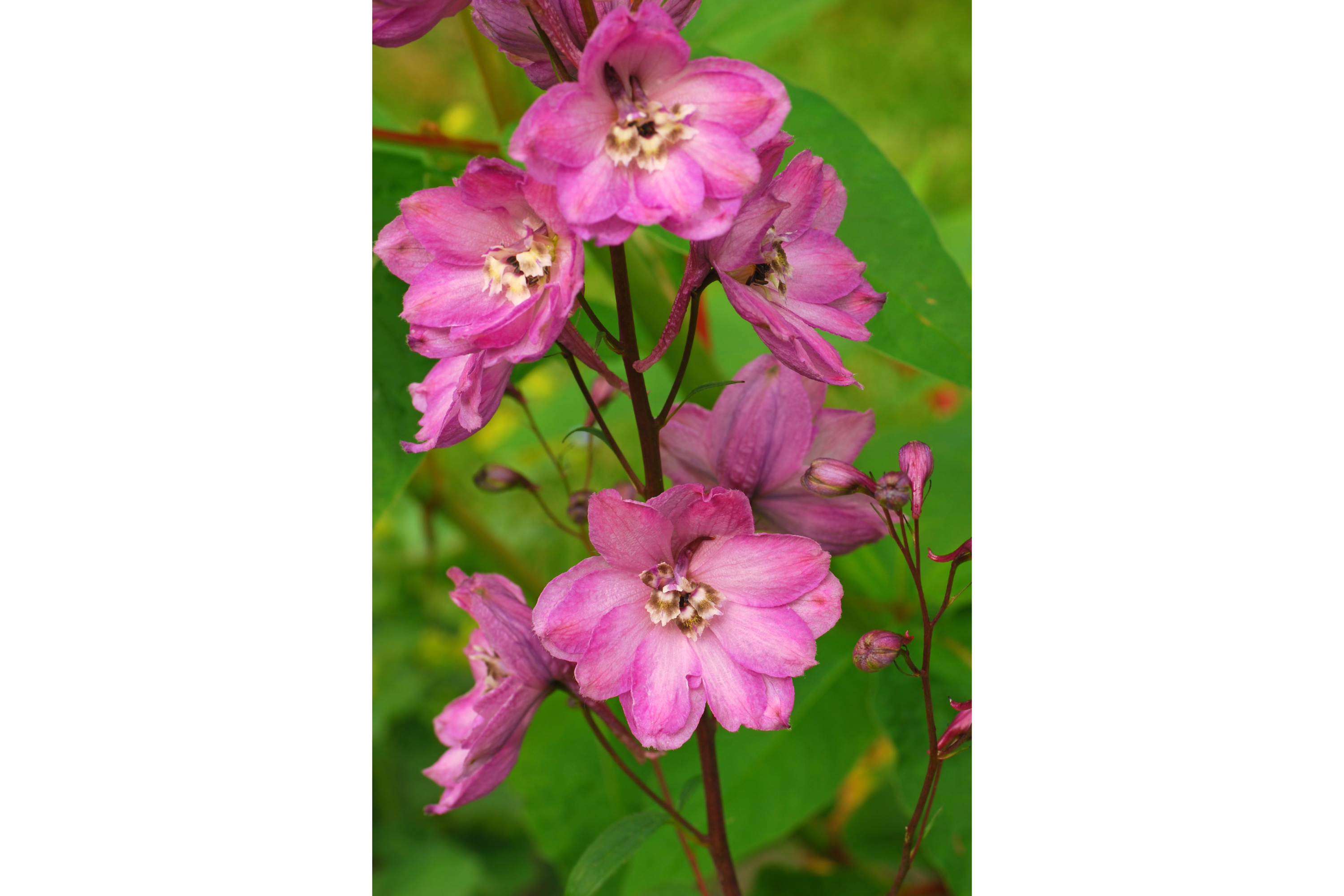Purple mullein
(Verbascum phoeniceum)

Description
Verbascum phoeniceum, known as purple mullein, is a species of mullein that is part of the family Scrophulariaceae native to Central Europe, Central Asia and Western China. It is also naturalized in certain regions of the US and Canada. It successfully grows in USDA’s zones 4 to 8. It is a short-lived perennial species, and blooms earlier than other mullein species on average, producing vibrant purple-pink flowers; it can grow up to 1m or more. Verbascum phoeniceum is a dicot plant that begins with rosette growth in late spring and into summer. The initial lower rosette shows whorled basal leaves with pinnate venation and as growth continues, simple leaves grow in an alternating fashion on the stem. The shape of the leaf blades of the V. phoeniceum can be elliptical, ovate, chordate or lanceolate depending on the environment in which it grows in. Five-petaled flowers appear when in bloom, where it grows as an inflorescence with multiple flowers on a spike starting with the first blooms on the bottom of the spike and newer ones upwards of the spike. V. phoeniceum exhibits pentamerous growth of perianth and corolla that is characteristic of the dicotyledonus mulleins. The flowers can be deep purple in color (violetta) to pink (rosetta) and white (flush of white). The variation in shades for V. phoeniceum makes it ideal for hybridization with other mulleins. Hybrids may have flower colors ranging from white to various shades of pink and plum; as well as the advantage of a longer growing season due to its perennial nature. In the center of each flower are fuzzy golden-yellow stamens. The height of V. phoeniceum is shorter than most mulleins but can range between 0.9m – 1.2m in an herbaceous habit. Verbascum phoeniceum is found in southern Europe, northern Africa and central Asia. It thrives in dry soils with full sunlight. Although they can tolerate moderate shade, they are unable to withstand soggy soils thereby requiring efficient water drainage. It can be found growing wild on hillsides, disturbed sites and woodlands in their native habitats. V. phoeniceum has been brought over to the US among other temperate regions and cultivated as an ornamental garden plant. It thrives in USDA’s hardiness zones 4-8, with possible natural occurrence in New York and Ohio where the winter temperatures are also required for seed germination after dormancy.
Taxonomic tree:







